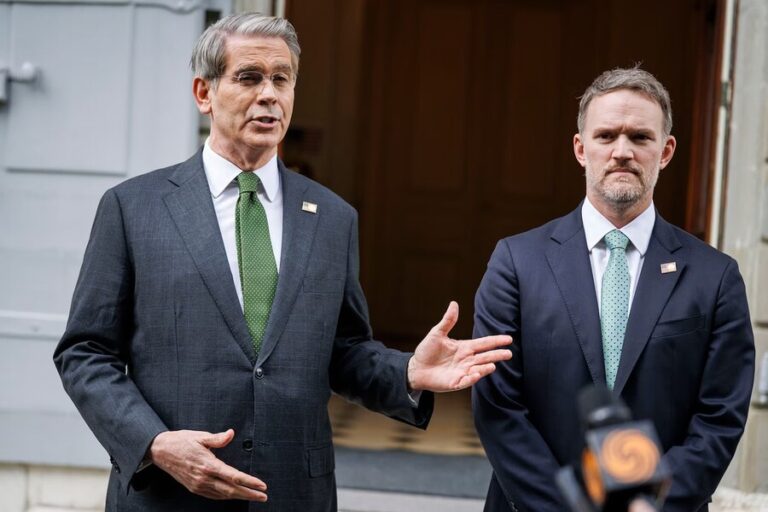After two intense days of high-level negotiations in Switzerland, the United States and China have taken what appears to be a meaningful step toward easing their prolonged trade conflict. However, the nature and framing of this breakthrough remain subject to interpretation, with the U.S. describing it as a “deal” and Chinese officials referring to it as a “consensus.”
In a media briefing on Sunday, Chinese Vice Premier He Lifeng stated that the discussions “achieved substantial progress and reached important consensus.” He emphasized China’s desire to avoid an escalating trade war, stating, “China doesn’t want to fight a trade war because trade wars produce no winners. But if the U.S. insists on forcing this war upon us, China will not be afraid of it, and we’ll fight to the end.”
The White House issued a parallel statement earlier in the day claiming that a “deal” had been reached with China, though it notably offered no specifics. U.S. Trade Representative Jamieson Greer echoed that sentiment by labeling it a “deal,” while Treasury Secretary Scott Bessent, who participated in the Swiss negotiations, opted for more cautious phrasing, describing the outcome as “substantial progress.”
The ambiguity surrounding the terminology highlights the delicacy of the ongoing discussions. Chinese officials, however, have confirmed that a joint statement will be released Monday, offering a more detailed account of what was agreed upon and how the two nations plan to move forward.
Background: A Tariff-Fueled Trade Standoff
The talks follow months of heightened tensions between the world’s two largest economies, sparked by President Donald Trump’s decision last month to escalate tariffs on Chinese imports. The U.S. imposed a steep increase, raising levies to 145%, which prompted swift retaliation from Beijing with 125% tariffs on American goods.
These tit-for-tat measures rattled global markets and drew warnings from major corporations about the potential for price hikes on everyday goods for American consumers. China, which was the third-largest trading partner of the U.S. last year, accounted for nearly $440 billion in imports.
In a notable shift ahead of the weekend negotiations, President Trump signaled a willingness to ease tensions, suggesting via social media that it “seems right” to reduce tariffs from 145% down to 80%, a move seen as a potential opening for reconciliation.
What’s in the Works?
According to Vice Premier He Lifeng, both parties agreed to establish a consultation mechanism dedicated to addressing economic and trade concerns. This includes designating lead negotiators from each side and committing to ongoing dialogue aimed at narrowing persistent differences.
Although Chinese officials stopped short of providing definitive answers regarding how the agreement might impact the U.S. trade deficit, they reiterated that any eventual outcome must align with China’s broader economic development goals.
“China is always pursuing win-win outcomes in its trade and economic negotiations,” said Chinese trade negotiator Li Chenggang, adding that the tone of discussions reflected “mutual respect” and “sincerity.”
Why This Matters
For observers both in Washington and Beijing, the key question remains: Will this “deal” or “consensus” translate into lasting progress?
The joint statement expected Monday may provide greater clarity on whether this is a preliminary framework or a comprehensive settlement. What is clear for now is that both sides are showing signs of measured optimism, and that a channel for sustained engagement has been reopened.
This tentative breakthrough could ease uncertainty for global markets and businesses bracing for the ripple effects of prolonged trade hostilities. It also offers the Biden administration a potential win in recalibrating U.S.-China economic relations without conceding core policy goals.
What’s Next?
- A joint U.S.-China statement is expected Monday, which should outline the specifics of the agreement.
- Continued trade consultations and the identification of lead negotiators on both sides will be part of the next steps.
- Analysts will be watching closely to see if the White House reduces tariffs as hinted by President Trump.
- The business community is expected to assess the agreement’s impact on pricing, supply chains, and bilateral trade flows.
Until the full contents of the agreement are disclosed, stakeholders are proceeding with cautious optimism. Whether this development marks the beginning of the end of the trade war—or merely a temporary pause—remains to be seen.
